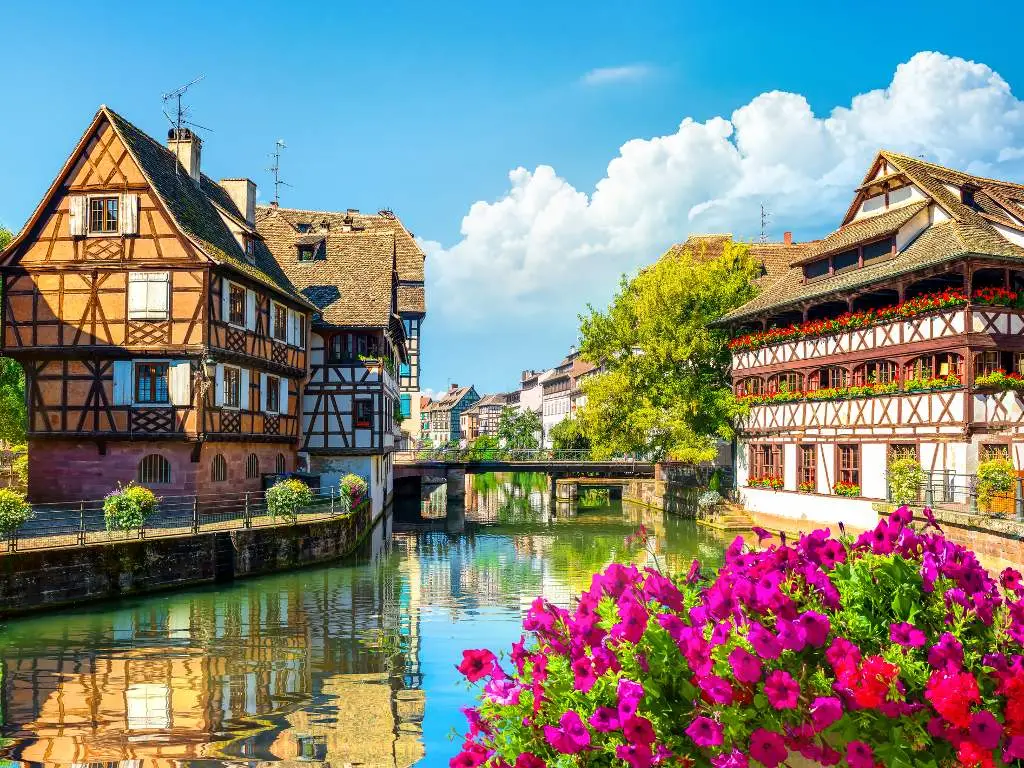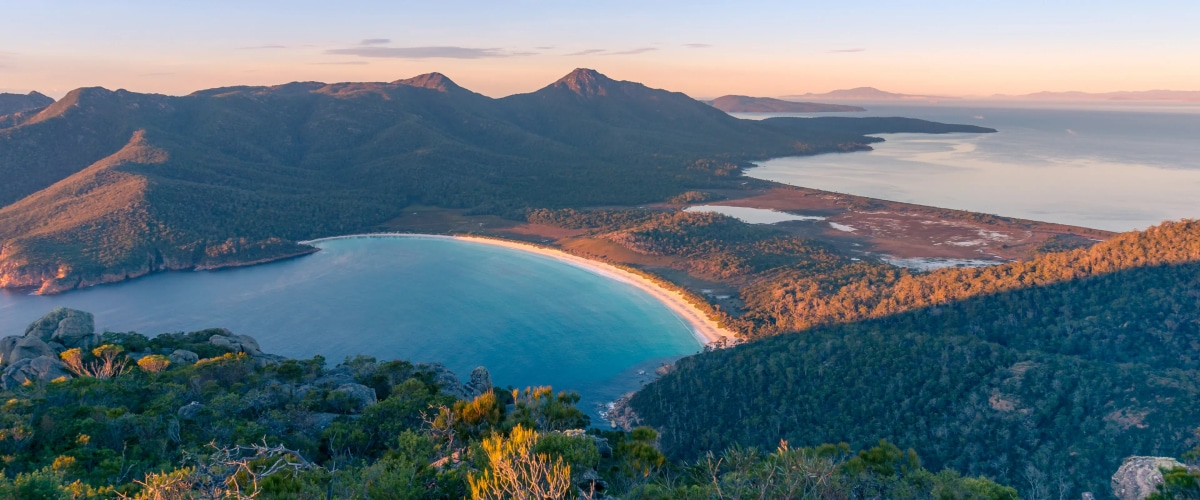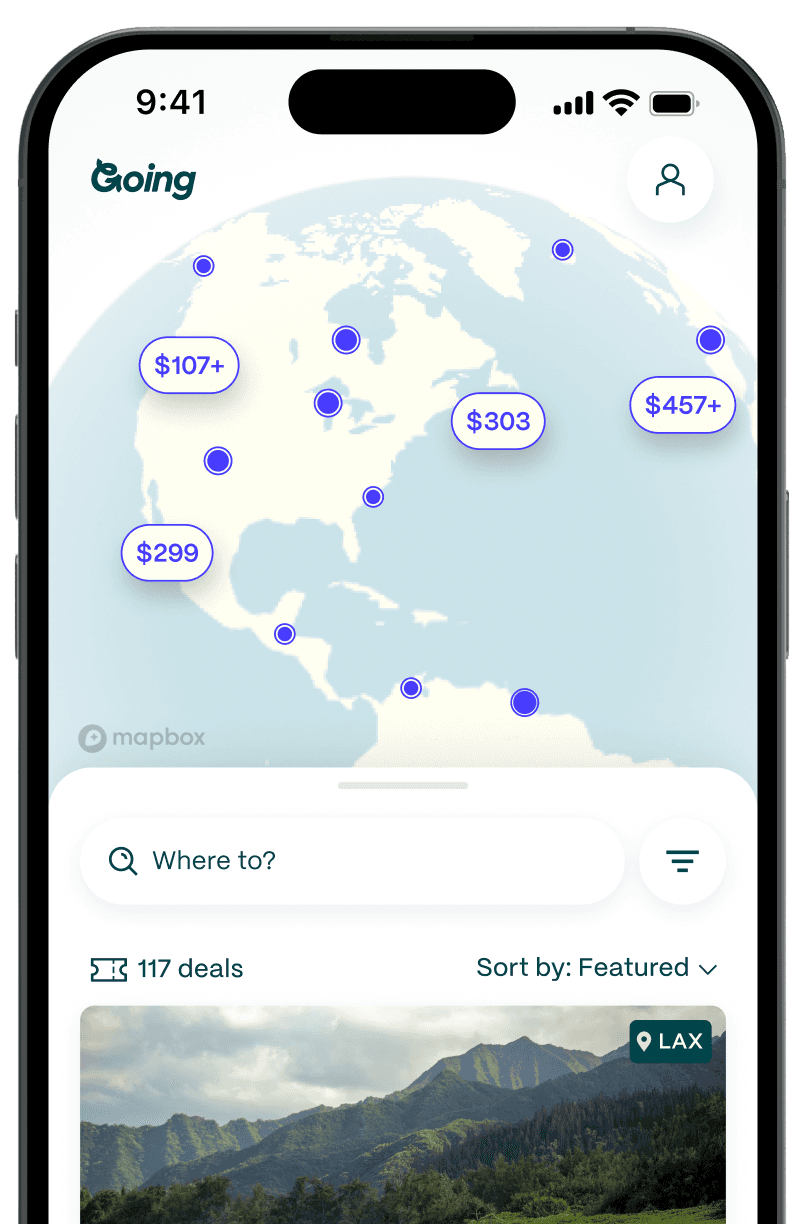
Tanzania: The African Country Where the First Humans May Have Walked
In 1964, after many colonial battles, mainland Tanganyika and the Zanzibar Archipelago on Africa’s east coast were unified, forming the United Republic of Tanzania. The new country was solidified through the Arusha Declaration under president Julius Kambarage Nyerere, who became known as the “Father of the Nation.” While some of Nyerere’s policies were controversial, they were focused on ujamaa, or “brotherhood.” He echoed the ideals of Pan-Africanism and, with that, a national language that strived to unite 120 ethnic groups throughout the country: kiSwahili (the language spoken by the Swahili people).
Today, Tanzania is regarded as one of Africa’s most politically stable democracies. It borders eight countries, as well as the Indian Ocean, making it a gateway to explore deeper into Africa. Astoundingly, over 35% of the country’s land is government-protected, with 22 national parks, 22 game reserves, 363 forest reserves, 14 bee reserves, and 133 cultural heritage sites to name just a few.

Show-stopping nature
Tanzania boasts seven UNESCO World Heritage Sites, with natural wonders and parks dominating the list. The Serengeti National Park hosts one of the grandest mammal migrations on Earth. The migration commences north of Tanzania in Kenya's Maasai Mara region early each year, but the most impressive spectacle takes place throughout June and July when thousands of wildebeest, zebras, and antelopes journey through Tanzania’s Ngorongoro Conservation Area outside of the Serengeti, as they make their way back to northern Maasai Mara in search of rich grazing lands.
Ngorongoro also has one of the world’s largest volcanic calderas—at a sprawling 102 square miles—dominated by Lake Magadi. Here, the alkaline waters beckon lesser flamingos, while the Big Five, including the elusive black rhino, roam the flat plains. In southeastern Nyerere National Park, the mighty Rufiji River winds through picturesque oxbow lakes. Nyerere is host to a massive population of hippos and crocodiles. With 440 species of birds, including bee eaters and kingfishers, the park is also a birder's haven. In Tarangire National Park, you’ll find an abundance of elephants and baobab trees, while Gombe Stream National Park is where Jane Goodall began her research on chimpanzees and primates.
No Tanzanian adventure is complete without Kilimanjaro National Park. You can see the tallest mountain in Africa from above by plane, or you can trek it on a five-to-eight-day journey through rugged terrain culminating at Uhuru Peak. (Uhuru means “freedom” in kiSwahili.) As for the origins of the name Kilimanjaro, it's believed to stem from the fusion of "kilima," the kiSwahili word for mountain, and "njaro," the kiChagga word for whiteness—aptly describing the majestic White Mountain.
The dawn of human evolution
Olduvai Gorge, located within the Ngorongoro Conservation Area about a 14-hour drive or two-hour flight north of Dar es Salaam, is renowned for its collection of hominid fossils, stone tools, and ancient footprints, which have led paleontologists to believe that this is the very place where mankind took its first steps. The gorge—named after the Maa word for a prevalent East African wild sisal plant in the area—holds the key to unraveling the mysteries of our origins.
For decades, scientists have meticulously excavated remains that date back over two million years and shed light on human evolution. In the oldest layer, the first early-human species, Homo habilis, was discovered along with their stone tools; younger layers reveal the presence of Homo erectus and early examples of our own species, Homo sapiens.
Near Olduvai Gorge, you’ll find Laetoli, a prehistoric site in the Arusha region, where ancient footprints have been preserved in volcanic ash for 3.7 million years. In 2008, members of a Maasai community discovered human fossil footprints in Engare Sero, another prehistoric site about 62 miles from Laetoli. Conservationists who excavated the site discovered it to be the largest collection of ancient human footprints in Africa.

The lure of Zanzibar
It’s common to see the Maasai men—clad in crimson cloth and braided hair—walking along the long stretches of white-sand beaches in Zanzibar. Many of them have come from their homelands to sell goods, like colorful beaded bracelets, anklets, and leather sandals to the ever-increasing number of tourists. In 2022, the Zanzibar Archipelago was awarded Africa’s Leading Beach Destination at the World Travel Awards. (It has also been nominated in 2023.)
Beyond the beaches, warm azure waters of the Indian Ocean, and the UNESCO World Heritage Site of Stone Town, Zanzibar is a labyrinthine maze of villages. Paje, Uroa, Pingwe, and Kizimkazi are only some of the villages where tight-knit communities build their homes, open mini-markets, sell breakfast delights of Urojo (a soup of blended potatoes, flour, spices, and other Indian-influenced toppings) to early morning workers, and answer the call to prayer as the Imam sings to villagers. Men—dressed as they desire—wade in the low tides to fish, or they sell rice, goat meat, and other daily needs. The women and girls opt for color and modest dress. They sit in groups of two or more during the day attending to housework, and in the evenings they sit on the stoop catching up on the day’s happenings. Islam dominates life here; Western travelers, showing up in less-conservative wear, are slowly changing what is considered culturally acceptable, but visitors are still encouraged to respect the conservative culture.
People of the South
Tanzania’s 120-plus ethnic groups make it one of the most linguistically and culturally rich countries on the continent. When Julius Nyerere took charge of a democratic Tanzania, his mission was clear: to unify a land once under German and British colonial rule, along with Zanzibar, which was formerly colonized by the Portuguese and Arabs. Nyerere championed kiSwahili—a language rooted in Bantu that also carries the melodies of Arabic, Portuguese, and German loan words—as a symbol of national identity, encouraging its use in schools and government.
While kiSwahili (and English in more touristic areas) stands tall as the official language of Tanzania, a richer heritage is found in the individual languages of the various nations. The Sandawe and Hadza hunter-gatherer communities are indigenous to Tanzania; the Sandawe are said to speak a branch of the KhoiSan languages, and the Hadza—known for their clicks akin to southern Africa's KhoiSan language—exist in a world of linguistic isolation. Around 3,000 years ago, Bantu-speaking tribes migrated to the region, imprinting their own cultural and linguistic legacy. The Sukuma settled south of Lake Victoria, and the Nyamwezi landed farther to the west; for both groups, subsistence farming is their way of life. The Hehe even farther south primarily tend their cattle in the Iringa district, while the Haya have carved their home in the northwestern region for its fertile beauty. Farther east, in the Kilimanjaro region, the Chagga reside, sharing remarkable similarities with the Maasai—nomadic pastoralists whose language resonates with the rhythms of Sudanese people. So while kiSwahili is the official language of Tanzania, as you navigate the country, the accent with which kiSwahili is spoken reveals the tales of its people.

The Mountain of God
Ol Doinyo Lengai—”The Mountain of God” in the Maa language—is an active volcano that has mystified geologists for centuries. What sets this volcano apart is not just its fiery eruptions but the extraordinary nature of its lava. This enigmatic peak produces the world's coldest black lava, which, upon cooling, transforms into a gleaming white rock.
With 16 recorded eruptions in the past century, Ol Doinyo Lengai continues to intrigue and challenge scientists and adventurers alike. The most recent eruption occurred in 2021, adding another chapter to the volcano's turbulent narrative.
Summiting the mountain requires a strenuous climb of approximately six hours at night, though some ultimately turn back due to the unforgiving difficulty of the ascent. Those who persevere are rewarded with unparalleled views. On a clear day, the crater rim offers views of the majestic silhouettes of Mount Kilimanjaro, Mount Meru, and the sprawling Serengeti plains.
Spice of life
When the Portuguese arrived in Zanzibar in the 15th century during the Age of Exploration, they introduced garlic and chili peppers. But it was the Omani sultan Seyyid Said, who, realizing the fertility of the soil enhanced by the archipelago’s tropical climate, used enslaved people to start clove plantations. He later added pepper, cinnamon, vanilla, ylang ylang, and lemongrass to the plantations. At the time, in the 19th century, spices traded for more than gold, and Zanzibar became the largest exporter of cloves.
Today, spice farm tours introduce you to the many spices, but you’ll also learn their other uses. Cardamom is used as a breath freshener, the seed from nutmeg is said to enhance a woman’s libido, and the red annatto seed is used to color lips. At Darajani Souk, a colossal street market in Stone Town, you’ll find merchants selling packets of spices to be used in traditional foods like pilau, biryani, pani puri, and mandazi (a sweet doughnut).

Usambara Mountains
Paragons of natural beauty, the overlooked Usambara Mountains in Tanzania’s northeastern region are split into two subranges—East and West—about 56 miles (90 kilometers) long and half as wide. The lush range is home to an array of endemic flora and virgin rainforests. The dense forests are filled with towering trees and unique plant species, like orchids and the African violet. For wildlife enthusiasts, the Usambara Mountains offer a glimpse into a thriving ecosystem. Winding trails host exotic bird species, including the Usambara weaver and akalat, and other small creatures, such as bushbabies, galagoes, and chameleons.
Local hiking trails vary from leisurely strolls amid undulating landscapes to challenging treks with breathtaking summits. The Mkuzi Waterfalls trail leads you through lush foliage, accompanied by the soothing sound of cascading water. For intrepid explorers, the Irente Viewpoint hike rewards you with panoramic vistas that stretch as far as the eye can see.
Don’t miss Lushoto, nestled within the Usambara Mountains and known as “The Switzerland of Africa.” This vibrant hub serves as a gateway to the region's natural wonders and offers a glimpse into the local culture of the Shamba people, whose kingdom was built in the 18th century by their leader, Mbegha. The kingdom dominated before falling to German colonial rule in the 1890s. You’ll still find colonial-era architecture around town, at the Boma, Lushoto Post Office, Lushoto District Commissioner’s Office, and the German church. Beyond its history, Lushoto’s landscape is filled with plots of subsistence farming, and bustling marketplaces offer traditional crafts and cuisine, like nyama choma (roasted meat), katlesi (potato cake with a meat or vegetable filling), or chips mayai (fries cooked with eggs).
The rise of Bongo Movie and Bongo Flava
In 1963, Nyerere called on Yugoslavian filmmakers to establish a film industry in Tanzania. The films made were both instructional and educational in nature and were the precursor to the country’s eventual film industry, known as Swahiliwood (aka Bongowood or Bongo Movie) in the 1990s. Bongo movies are low-budget films with short run times that are released straight to DVD. For an introduction to Bongo movies, watch Mke Wangu Samaki Mtu about a man married to a mermaid; Mbaya Mpenzi, which explores the predicaments of love and romance; Kibanango, which looks at tropes of witchcraft; and Zena na Betina about two impressionable young women who move to the city in search of employment.
With the emergence of the film industry came a new music genre originating in Dar es Salaam and appealing to young people: Bongo Flava. This popular, urban music style blends traditional Tanzanian melodies of taarab and dansi with the modern rhythms of R&B, reggae, and afrobeats.
The word Bongo is derived from kiSwahili meaning “intelligence,” or contrarily, “crazy.” In a 1970s speech, while Tanzania was facing challenging times, Nyerere announced that, in order to overcome the tribulations, the country would need to use Ubongo, or intelligence. Young people claimed the term, saying that in order to survive in the busy city centers, one would need brains—and some craziness. The music told stories about the daily realities of Tanzanians, as well as more broadly of love, success, and good times. Diamond Platnumz is currently the most popular Bongo Flava artist in Tanzania, whose hits have made him a worldwide sensation.
Good to Know
Is Tanzania expensive?
Tanzania is one of the most expensive destinations in Africa, though prices vary greatly depending on whether you are traveling in the high season or the low season. During the low season, accommodations go for as little as $12 a night for a hostel, almost tripling in price during the high season. High-end hotels can charge upwards of $700 a night. Accommodations and restaurants closer to the coast tend to cost two to three times more than what you’d find inland. Much of the country’s food is imported, lending to the moderate prices. Also, food tends to be pricier in touristy areas. Pizza, pasta, and burgers go for about $8–$12. Swahili cuisine is always cheaper; you can find pilau or goat meat for as little as $2. Depending on your interests, sightseeing or partaking in local activities can cost $30–$200 per person per trip. Going on safari costs about $2,500 for two people over two to three days, including a car, accommodation, game drives, and a driver (not including domestic flights, which cost less than $200 per person).
Best time to visit Tanzania
Tanzania’s winter (June–September) is the high season. It’s perfect for safari lovers because the foliage on the plains is meager, making it easy to spot wildlife. Zanzibar all but guarantees you’ll have great weather to enjoy the beach, snorkeling, and swimming with the dolphins.
The shoulder season (October–February) offers ample sunshine and balmy evenings. This is the season to observe calving of various species on the Serengeti Plains. The Sauti Za Busara Festival—an opportunity to listen to African music—takes place in Zanzibar each February.
The low season (March–May) brings heavy rains. Roads are often muddy, which makes traveling tedious and beach days a little less appealing. Note that some lodges in the parks close their doors during this time. But with fewer crowds, you are spoiled for choice of accommodation.
What languages are spoken in Tanzania?
KiSwahili is the main language spoken in Tanzania. It is used in schools, business, and government. With more than 120 different ethnic groups in Tanzania, though, regional dialects are sure to abound. English is also prevalent in major cities and towns.
Tanzania with kids
Tanzania has many family-friendly attractions, particularly on the mainland coast or Zanzibar. While lodges in the national parks do accommodate children, some safari companies may not take children under a certain age (usually 12 years old) on a game drive. However, there are a host of wildlife attractions within the vicinity of lodges, especially if you stay near a watering hole.
Tanzania public transportation
Dar es Salaam has a reputable bus system, allowing you to explore most of the city and its outskirts. Dala dalas (local taxis) extend to the rest of the country and are cheap, but travel times can be long. Long-distance luxury buses take passengers to and from different regions at fairly reasonable prices. Private taxis are ubiquitous, though they can be expensive, especially when paying in American dollars or Euros. If you want the freedom to explore, it’s best to rent a car, though this can be pricey. If you’re going on safari, car rental companies will only permit you to take their 4X4s into the national parks and game reserves.
Is Tanzania safe?
Tanzania ranks #91 out of 163. The country is generally a safe destination. There is risk of theft and pickpocketing, especially where large groups of people are gathered, like markets, train and bus stations, and ports. It’s generally safe for women to travel alone, but it’s safer to walk with a group at night.
Tanzania ranks #169 in the world for LGBTQ+ equality with a score of 14/100. The mainland is predominantly Christian while Zanzibar is predominantly Muslim. Displays of affection between people of the same sex are viewed as criminal offenses.
| Travel better prepared than ever before with convenient and affordable prescription travel medications and vaccine support before you go. Runway is a telehealth platform that offers you access to licensed physicians, affordable travel medications, vaccine support and extensive travel health guidance. Initiate your pre-departure telehealth consult at Runway Health.* |
Getting to Tanzania
- Main airport: DAR, ZNZ
- Average Going deal price on cheap flights to Tanzania: $627 roundtrip
Other Africa guides
*Going may earn affiliate revenue for links on this page.
Last updated January 12, 2024









